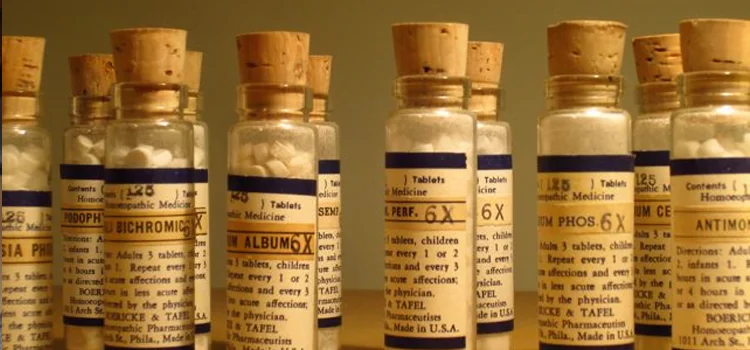Constantly progressing in a high quality scientific research in Homeopathy
HomeopathyOne is dedicated to promoting new, high-quality research in homeopathy, using the most rigorous methods available, and communicating the results of such work beyond the usual academic circles.
In the current climate where misinformation about Homeopathy in the mainstream media is rife, HomeopathyOne aims to provide decision-makers, academicians, healthcare practitioners, and patients with reliable, academically sound information about research in Homeopathy.
To achieve these goals, we focus our efforts on the following key areas:
Promoting high quality scientific research in Homeopathy
Conducting poor quality research is a waste of time and money.
Therefore, to qualify at HomeopathyOne, projects must first pass a peer review process conducted by our Scientific Advisory Committee. This ‘quality control’ system enables us to confidently channel expertise and support to only the most promising projects.
Identifying research priorities
HomeopathyOne’s research strategy involves identifying projects which meet all of the following criteria:
01
EFFECTIVENESS GAP CONDITIONS
Investigating an area of significant clinical need medical conditions for which even the best existing treatments are unsatisfactory or there is none.
02
IDENTIFYING RESEARCH PRIORITIES
Existing evidence suggests that Homeopathy has the potential to be effective even when measured on the conventional medicinal criterias.
03
DESIGN TRIAL ON CONCEPTS
It is feasible to design and carry out a suitable trial or experiment which is both ethical and likely to produce useful results.
Bursting Myths
It is a myth that there are no scientific research trials in Homeopathy. There have been a good range of studies and the numbers grow each year. Many are the same type of trials, used in conventional medicine.
Local to Global
Through the experience and network of HomeopathyOne’s Scientific Advisory Committee we are also able to continually review the status of research in Homeopathy at a global level. In such a rapidly evolving field, both the research questions being asked and the way we conduct research studies, may need to be adjusted in light of new information being discovered by teams around the world.
The development of Homeopathy was based on precise scientific approach. Dr. Samuel Hahnemann (1755 -1843), who first discovered Homeopathy as a coherent system of medicine, developed its principles from his observations of natural phenomena and then proceeded to test them repeatedly throughout his life. Two hundred and fifty years later that scientific approach is rigorously maintained.
















Clinical Research
Hundreds of clinical trials have been carried out in Homeopathic treatment. The results of these trials vary from positive to negative. Some high-quality Random Controlled Trials (RCTs) have produced significant positive results showing Homeopathic treatment having an effect that is not explicable by the mere placebo effect. The most recent and most rigorous investigation yet into clinical trials summarises the situation as ‘Medicines prescribed in Individualised Homeopathy may have small, specific treatment effects. Findings are consistent with sub-group data available in a previous ‘global’ systematic review. The low or unclear overall quality of the evidence prompts caution in interpreting the findings. New high-quality RCT research is necessary to enable more decisive interpretation.’
85% of RCTs are positive for homeopathy 70% report improvements in health after treatment.
The Randomised Controlled Trial (RCT) is considered the ‘gold standard’ in medical research. One group of patients, the control group, receives a placebo (a “dummy” pill) or standard treatment while another group of patients receives the medicine being tested. The trial becomes double-blinded when neither the patient nor the practitioner knows which treatment the patient is getting.
85% of conclusive RCTs demonstrate that Homeopathy is more effective than a placebo. To date, 142 RCTs on homeopathy have been published in good quality scientific journals: 74 were statistically strong enough to be able to draw firm conclusions; of those, 63 or 85% demonstrated Homeopathy was more effective than placebo.
The absolute best evidence (according to researchers) is meta-analysis. This is where RTCs are pulled together and analyzed ‘as if one’ to reach a more solid conclusion. There have been five meta-analyses of Homeopathy trials to date. Four showed that Homeopathy worked above and beyond placebo.
The RCT model of measuring drug efficacy poses problems for Homeopathic research. In Homeopathy, treatment is usually tailored to the individual. A Homeopathic prescription is based not only on the symptoms of disease in the patient but on a host of other factors that are particular to that patient, including lifestyle, emotional health, personality, eating habits, and medical history. These factors often make a “one drug fits all” RCT less meaningful.
Every Homeopath knows Homeopathy works because they witness the positive results every day in their clinics. The recording of data from everyday practice is called a clinical observation trial. Such trials are important as they put the patient at the heart of the research. In 2005 a six-year study at Bristol Homeopathic Hospital – representing the largest service evaluation of Homeopathic treatment – reported that 70% of 6,500 follow-up patients experienced an improvement in their health.
A report commissioned in 2005 by Prince Charles and carried out by economist Christopher Smallwood found a 30% drop in the number of consultations with GPs and a saving in prescription drug bills of 50% when patients were treated with complementary and alternative medicines.
Basic Research
Recent advances in fundamental research are increasingly clarifying an explanation for the mechanism of action of the diluted and succussed medicines used by Homeopaths. In vitro techniques not previously available to scientists have enabled laboratory research to reveal the verifiable effects of high dilution medicines. The explanation of the mechanism of action currently appears to lie between the fields of nano-technology and electromagnetism.

